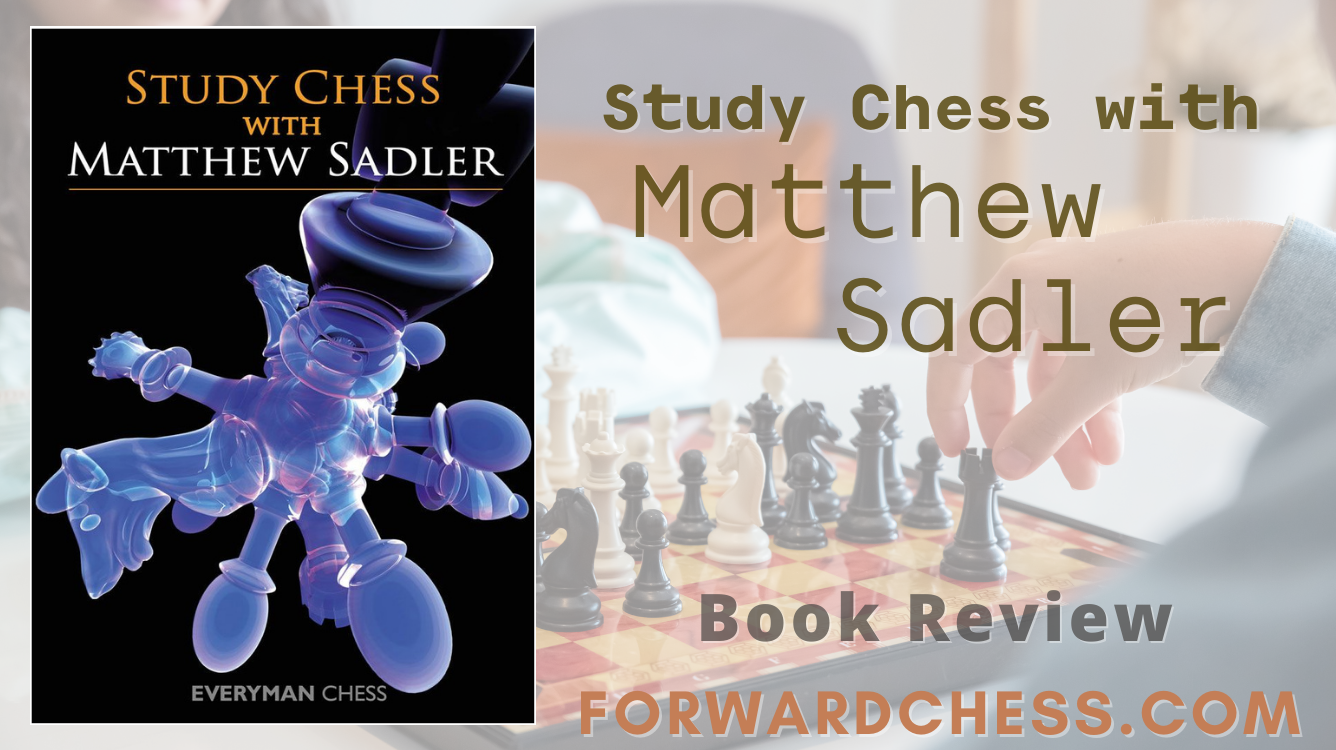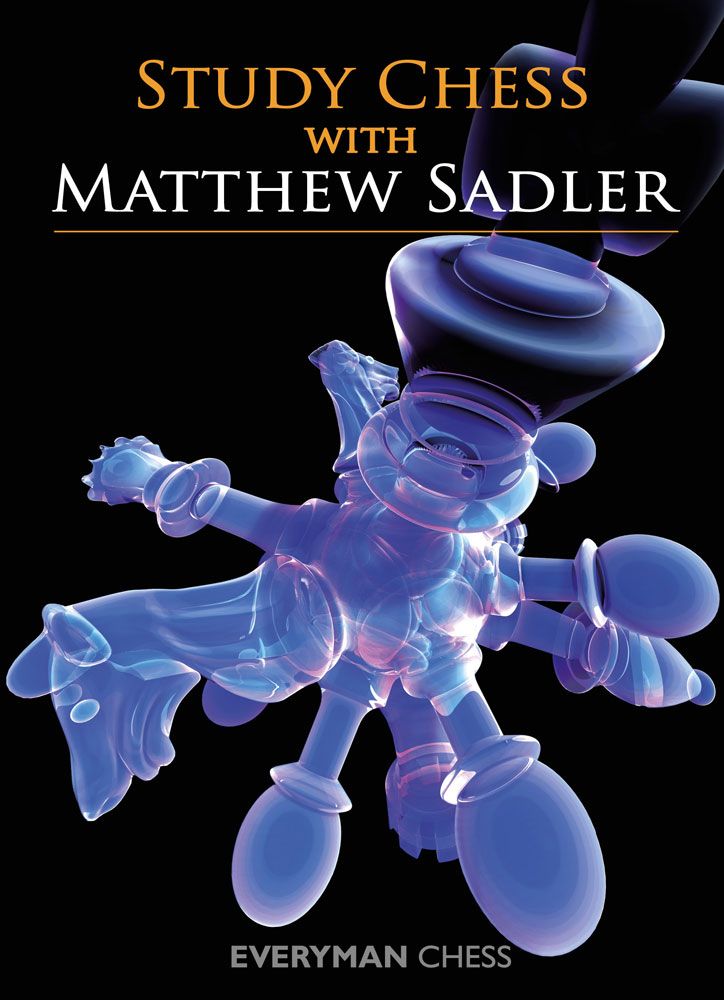Review: Study Chess with Matthew Sadler
“I suppose you could call this book a collection of my personal ‘Eureka!’ experiences, those wonderful moments when something complicated suddenly feels as natural and as easy as breathing.” – the author.
GM Matthew Sadler is a strong British grandmaster with a peak rating just below 2700. He had an extended break from professional chess from 2004 – 2010, before deciding to make a comeback in 2010. As he says, he got the urge to play again, but more importantly, to ‘play well again’ This book, written in 2012, is a summary of how he made the comeback and the trials and tribulations of his return. He has continued to play sporadically since that time, and remarkably has managed to increase his rating since his return.
The book is divided into six chapters:
- Discovering New Ideas in the Opening
- Introducing New Ideas Easily into your Opening Repertory
- Playing Unorthodox Openings
- Types of Thinking in the Middlegame
- That Didn’t Quite Work Out…
- Thinking in Endgames
Not surprisingly, openings are a dominant theme in the book, as opening research is essential for success at the professional level. Sadler suggests various ways to generate ideas during an analysis session, such as ‘disturbing the material balance’, ‘acts of wanton aggression’ and the ‘spoilsport gambit (exchanging queens)’. The humour in the titles is a common theme in the book. He suggests that ‘crossover themes’ (borrowing ideas from other openings) is a particularly fruitful technique. The themes are examined through a series of annotated games with insightful commentary.
Here is an example of the crossover theme, with annotations from the book.
Sadler went on to win the game in 22 moves.
This example is typical of Sadler’s writing style. He clearly explains the background and motivation for his moves, and all of this is done in an engaging and personal style. Of course, not all his experiments worked out well, and Sadler doesn’t shy away from giving examples of where things went badly wrong.
Middlegame planning is another important theme in the book. Here, Sadler describes three types of thinking, namely active thinking, reactive thinking and prophylactic thinking, and gives examples of each type. He also provides exercises for the reader to solve. These are quite different to the normal ‘find the winning move’ exercises and involve answering more general questions.
In this position, the questions are:
- What do you want?
- How do you achieve it?
Sadler proceeds to annotate the remainder of the game to answer these two questions.

In the final chapter, Sadler offers some endgame advice, particularly on the tricky issue of the transition from a middlegame to an endgame. He offers an interesting tip about this: “Constantly checking how the position would be without queens really helped me to make a better job of making that mental switch in the heat of battle.”
In summary, Sadler has written a fine book. It can be read as an autobiography of a particular time of his life, or as a highly accessible book on how to study in chess. It succeeds on both counts.
- 1000 Published books on Forward Chess - November 15, 2024
- Book Review: A Guide To Chess Improvement - September 9, 2024
- Review: Chess Coach by Vladimir Barsky - August 26, 2024


